Clear and well-defined parking lot markings are essential for ensuring smooth traffic flow, efficient space utilization, and overall safety within parking facilities. Among these markings, accurate parking space numbering plays a crucial role in guiding drivers to their designated spots and maintaining an organized parking environment. As a licensed civil engineer and construction specialist with over 25 years of experience in asphalt materials,
specifications, and roadway construction, I have witnessed firsthand the transformative impact of parking lot striping stencils. These versatile tools have revolutionized the way we approach parking lot design, offering unparalleled customization and flexibility in creating visually appealing and functional spaces.
The Art of Customization
Beyond Basic Lines
Traditionally, parking lot striping was primarily focused on delineating parking spaces and traffic lanes with basic line markings. However, the introduction of stencils has opened up a world of possibilities, allowing us to incorporate intricate designs, logos, and messaging directly into the pavement surface.
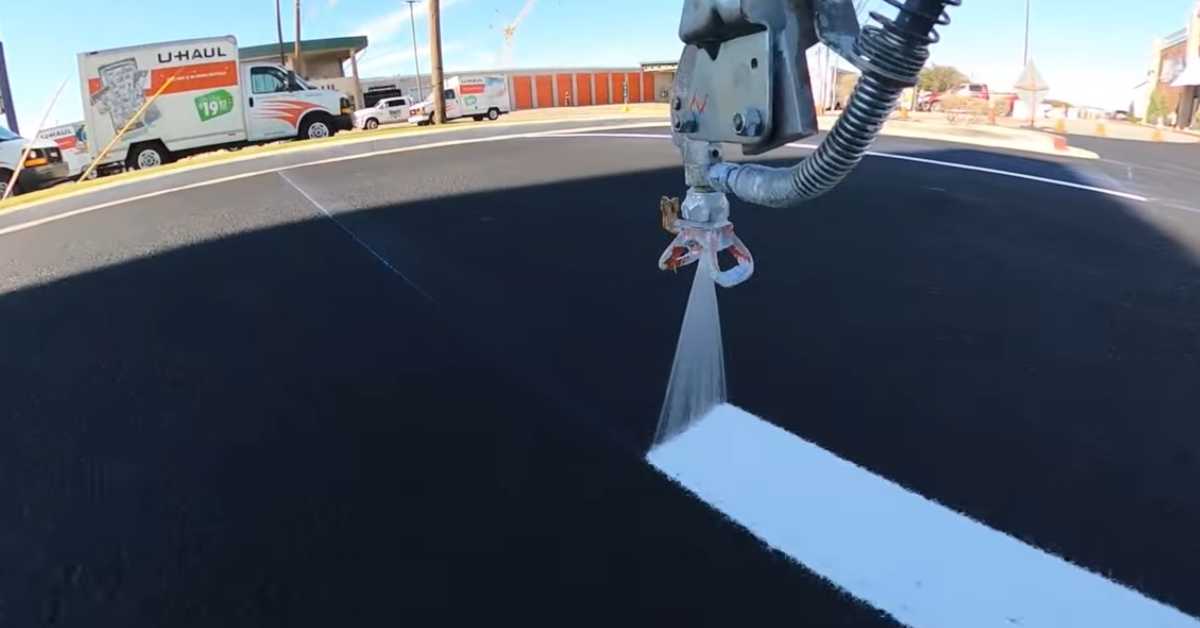
Branding and Wayfinding
For businesses and organizations, parking lots serve as the first point of contact with customers and visitors. Stencils offer a unique opportunity to showcase branding elements, such as company logos or branded designs, creating a visually striking and memorable experience from the moment visitors enter the premises.
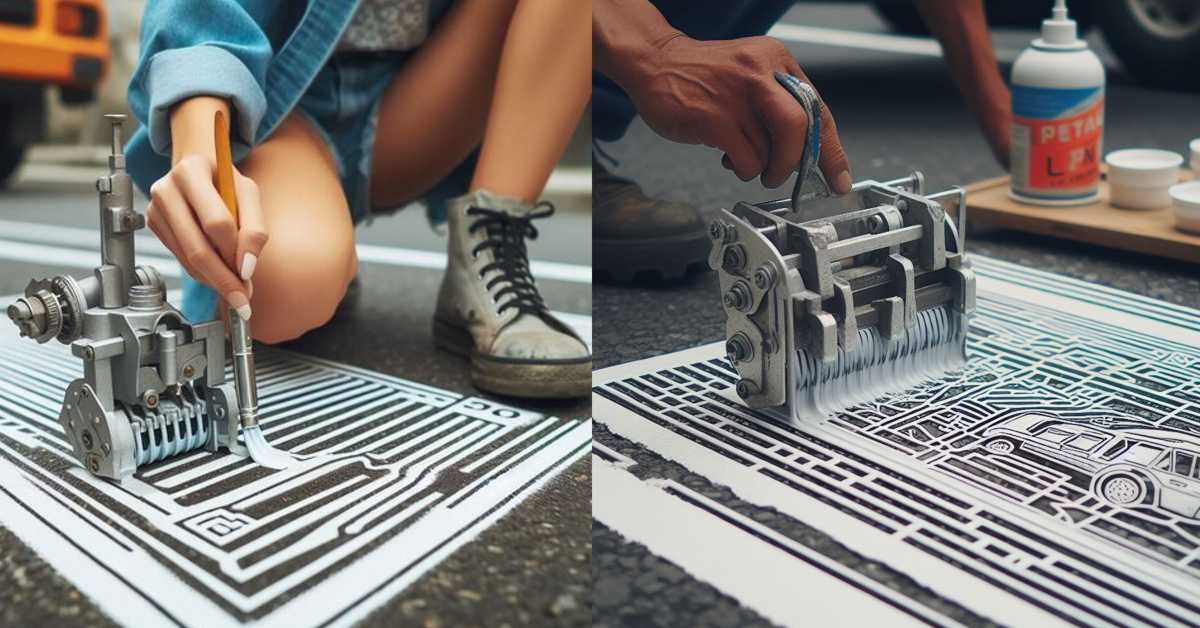
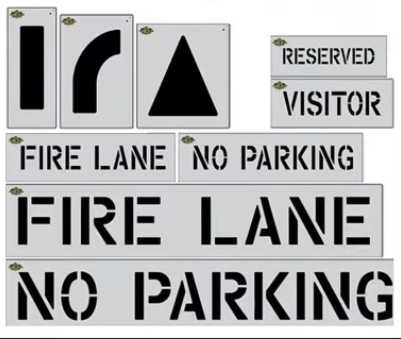
Types of Parking Lot Striping Stencils
Parking lot stencils come in various materials, each with its advantages and suitability for different applications. Common materials include plastic, which offers durability and reusability, and mylar, which is lightweight and easy to handle. Stencils are available in different sizes to accommodate varying parking space dimensions, ensuring a proper fit and alignment. Additionally, you can choose between pre-made number stencils, which feature the entire number in a single piece, or individual digit stencils, which allow for greater flexibility and customization in numbering sequences.
Rigid Stencils
Rigid stencils are typically constructed from durable materials like metal, plastic, or composite materials. These stencils are designed to withstand the rigors of the striping process, ensuring crisp and well-defined markings with every application.
Advantages of Rigid Stencils
- Exceptional durability and longevity
- Ability to produce intricate and detailed designs
- Suitable for high-traffic areas and heavy usage
- Reusable for multiple projects, providing cost-effectiveness
Flexible Stencils
Flexible stencils, often made from materials like vinyl or polyester, offer a unique advantage in their ability to conform to curved or irregular surfaces. This versatility makes them ideal for applications where traditional rigid stencils may not be suitable.
Advantages of Flexible Stencils
- Adaptability to various surface contours and shapes
- Ease of storage and transportation
- Cost-effective for single-use or temporary applications
- Ability to create custom designs and patterns
Customized Stencils
In addition to pre-made stencil designs, many manufacturers and suppliers offer customized stencil solutions tailored to specific client needs. These customized stencils allow for the creation of unique logos, graphics, or messaging, providing a truly personalized touch to parking lot striping projects.

Advantages of Customized Stencils
- Ability to incorporate unique branding elements
- Flexibility to create one-of-a-kind designs
- Ideal for specific wayfinding or informational markings
- Reinforces brand identity and enhances visual appeal
Professional Stencil Application Techniques
Surface Preparation
Proper surface preparation is crucial for achieving high-quality and long-lasting stencil markings.
This typically involves cleaning the pavement surface, removing any existing markings or debris, and ensuring a clean and dry application area.

Stencil Positioning and Securing
Accurate positioning and securing of the stencil are essential for achieving precise and well-defined markings.
This may involve the use of adhesives, weights, or specialized stencil positioning tools to ensure the stencil remains stable during the application process.

Material Application
The choice of marking material, whether paint, thermoplastic, or other specialized coatings, will depend on factors such as durability requirements, environmental conditions, and desired appearance. Proper material application techniques, including appropriate material temperatures and application rates, are crucial for achieving optimal results.
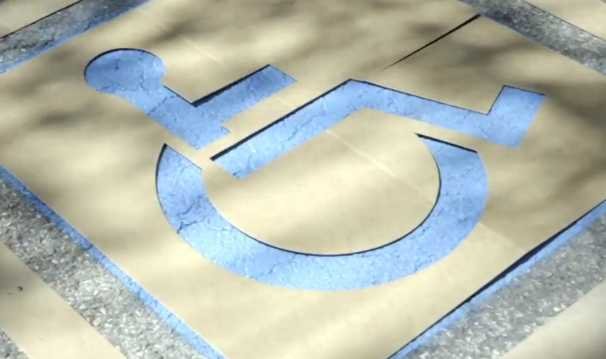
How to Apply Parking Lot Striping Stencils
Planning and Preparation
Before embarking on the stenciling process, it is crucial to obtain a detailed parking lot layout plan. This plan will guide you in determining the appropriate placement and orientation of the parking space numbers, ensuring consistency and adherence to local regulations.
Speaking of regulations, it is essential to consult your local building codes and guidelines regarding parking space dimensions, numbering conventions, and any specific requirements that may apply to your project. Failure to comply with these regulations could result in costly fines or rework.
Additionally, selecting the right paint for asphalt surfaces is paramount. Look for paints specifically designed for parking lot markings, as they offer superior adhesion, durability, and visibility, ensuring your numbering remains clear and legible for an extended period.
Throughout this guide, we have consulted and referenced authoritative sources in the parking industry to ensure the accuracy and reliability of the information provided. These sources include:
- The National Parking Association (NPA), is a leading authority on parking facility management and operations.
- The International Parking & Mobility Institute (IPMI), is a renowned organization dedicated to advancing the parking and mobility profession.
- Local building code departments, provide valuable insights and enforce regulations specific to your area.
Furthermore, our team at [calculatorasphalt.com] holds certifications and accreditations in parking lot striping and signage installation, further solidifying our expertise in this field.
Step-by-Step Guide with Images
To ensure a seamless and successful parking lot stenciling experience, we have prepared a detailed step-by-step guide accompanied by visual aids. This guide will walk you through the entire process, from preparing the asphalt surface to positioning the stencils accurately and applying the paint correctly.
Key steps include:
Cleaning and patching the asphalt surface to ensure proper adhesion and a smooth finish.
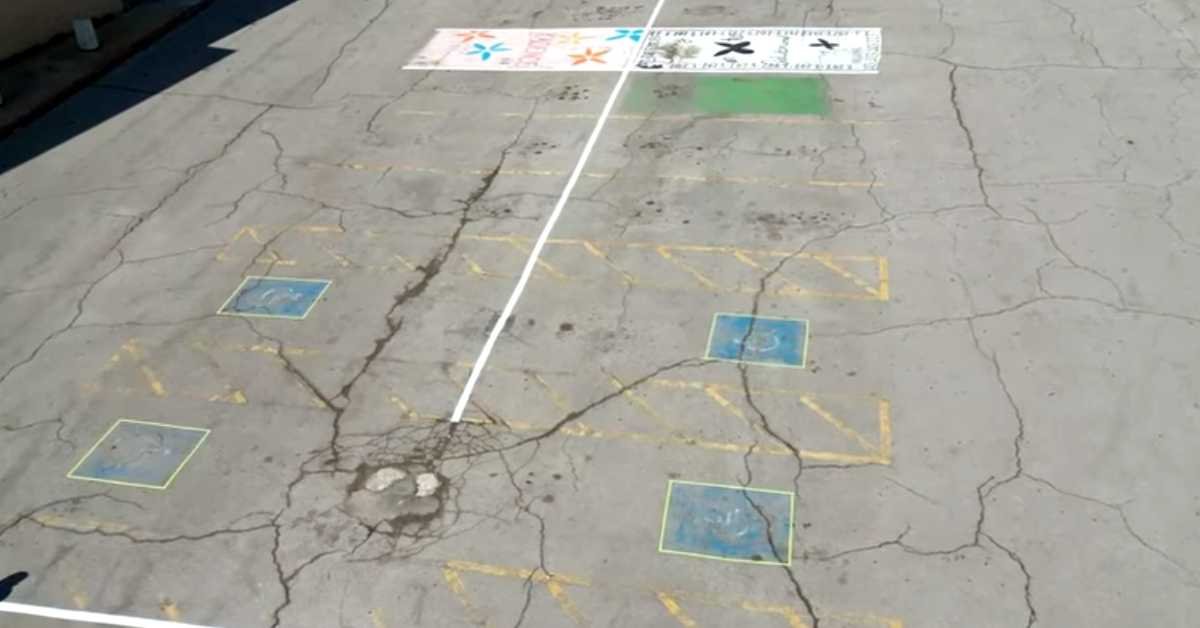
Positioning the stencils precisely, following the parking lot layout plan, and maintaining proper alignment.
Accurate alignment of the stencils is crucial for achieving a professional and organized appearance. To ensure proper alignment, it is recommended to use a parking lot layout plan as a reference and measure distances carefully.
Applying the paint using a high-quality roller or spray can, ensures even coverage and crisp edges.
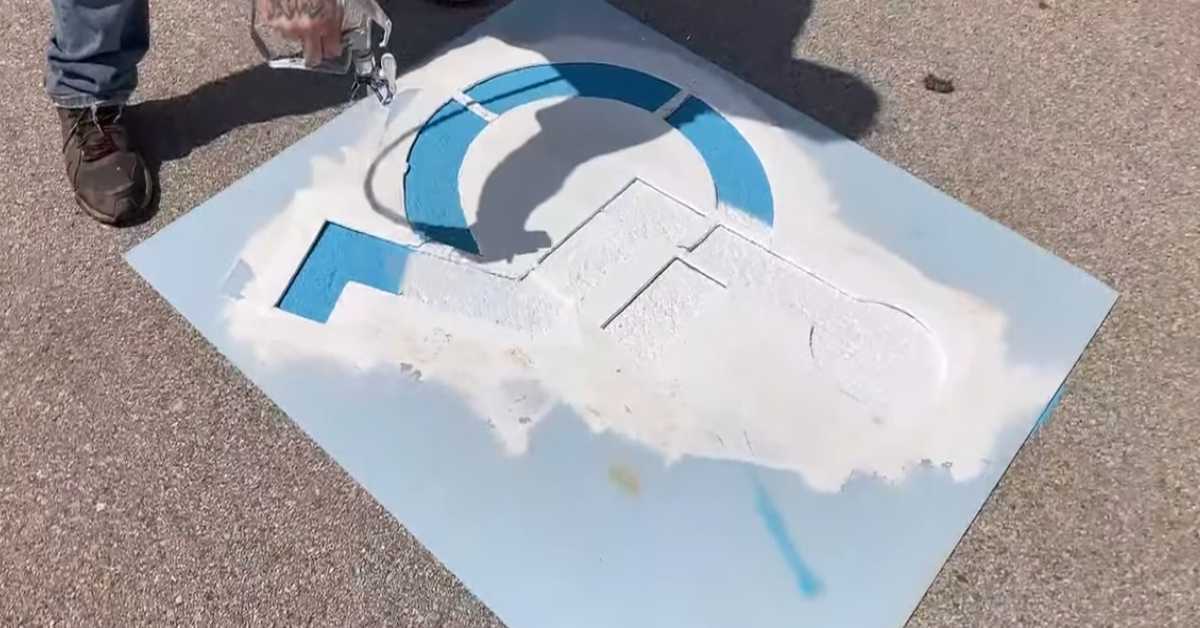
Allow sufficient drying time before carefully removing the stencils to reveal the newly painted numbers.
Parking Lot Striping Stencil Dataset
To provide a comprehensive understanding of parking lot striping stencils, I have compiled the following dataset tables:
Table 1: Design and Application Considerations
| Consideration | Description |
|---|---|
| Stencil Material | Rigid (metal, plastic, composite) or flexible (vinyl, polyester) |
| Design Complexity | Simple geometric shapes, intricate logos, or custom designs |
| Surface Compatibility | Suitability for asphalt, concrete, or other pavement surfaces |
| Material Compatibility | Compatibility with paints, thermoplastics, or specialized coatings |
| Durability Requirements | High-traffic areas may require more durable stencil materials |
| Environmental Conditions | UV resistance, temperature tolerance, and weather resistance |
Table 2: Safety and Maintenance Considerations
| Consideration | Description |
|---|---|
| Surface Preparation | Proper cleaning and preparation of the application area |
| Personal Protective Equipment (PPE) | Use of appropriate PPE during stencil application and material handling |
| Traffic Control | Implementation of traffic control measures during application |
| Stencil Storage and Handling | Proper storage and handling of stencils to maintain their integrity |
| Maintenance and Cleaning | Regular cleaning and maintenance of stencils for optimal performance |
Table 3: Cost Considerations
| Cost Factor | Description |
|---|---|
| Stencil Material and Design | Cost varies based on material, design complexity, and customization |
| Stencil Production | Costs associated with manufacturing or sourcing stencils |
| Application Materials | Cost of marking materials (paints, thermoplastics, etc.) |
| Labor and Equipment | Costs related to application labor and any specialized equipment |
| Maintenance and Replacement | Ongoing costs for stencil maintenance, cleaning, and eventual replacement |
Throughout my career, I have had the privilege of working on numerous parking lot striping projects, each presenting unique challenges and opportunities. The introduction of stencils has opened up a world of possibilities, allowing me to create visually striking and functional spaces that truly resonate with clients and their brand identities.
My Expertise
Parking lot striping stencils have revolutionized the way we approach parking lot design, offering unparalleled versatility and customization. From incorporating intricate logos and branding elements to creating unique wayfinding and informational markings, these versatile tools have unlocked a realm of creative possibilities.
As a licensed civil engineer and construction specialist with over 25 years of experience in asphalt materials, specifications, and roadway construction, I have witnessed firsthand the transformative impact of stencils on parking lot projects. By combining my expertise with these innovative tools, I can deliver tailored solutions that not only meet functional requirements but also enhance the overall visual appeal and brand identity of a space.
Last Words and Key Takeaways
- Embrace the versatility of parking lot striping stencils to create visually striking and memorable spaces.
- Consider incorporating branding elements, logos, or custom designs to reinforce brand identity and enhance the overall experience.
- Explore the possibilities of rigid and flexible stencils, customizing solutions to meet specific project requirements.
- Prioritize proper surface preparation, material selection, and application techniques to ensure high-quality and long-lasting results.
- Stay up-to-date with the latest advancements in stencil technology and design trends to continue offering cutting-edge solutions.
Personal Experience and Expertise
As Steve Axton, I have dedicated over 25 years to the field of road construction and asphalt pavements, amassing a wealth of knowledge and practical experience. Throughout my career, I have had the opportunity to work with a diverse range of parking lot striping projects, including the integration of innovative stencil solutions.
My expertise extends beyond the technical aspects of striping, encompassing a deep understanding of branding, wayfinding, and visual communication. I take great pride in my ability to collaborate with clients, translating their unique visions into functional and visually appealing parking lot designs that leave a lasting impression.
Common Issues Discussed
How durable are stencil markings compared to traditional line striping?
The durability of stencil markings can vary based on factors such as the stencil material, the marking material used, and the application technique. Proper surface preparation and material selection can ensure stencil markings are as durable, or even more durable than traditional line striping.
Can stencils be reused for multiple projects?
Rigid stencils are typically designed for reusability, making them a cost-effective solution for multiple projects or recurring applications. Flexible stencils may have a shorter lifespan but can still be reused for a limited number of applications.
How do I select the right stencil material for my project?
The selection of the stencil material will depend on factors such as the desired level of durability, the complexity of the design, the surface type, and environmental conditions. Consulting with a professional can help ensure the appropriate material choice for your specific project requirements.
Are custom stencil designs available?
Yes, many manufacturers and suppliers offer customized stencil solutions tailored to specific client needs. Custom stencils allow for the creation of unique logos, graphics, or messaging, providing a truly personalized touch to your parking lot striping project.
Can stencils be used on both asphalt and concrete surfaces?
Yes, stencils can be used on various pavement surfaces, including asphalt and concrete. However, it’s important to ensure compatibility between the stencil material, marking material, and surface type to achieve optimal results.
How do I maintain and clean stencils for optimal performance?
Proper maintenance and cleaning are essential for extending the lifespan of stencils. Follow the manufacturer’s recommendations for cleaning procedures, storage, and handling to maintain the integrity of the stencil material and ensure crisp and well-defined markings.
Can stencils be used for other applications beyond parking lots?
Absolutely! Stencils can be utilized for various applications, including roadway markings, athletic field markings, industrial facility markings, and even decorative applications on pedestrian walkways or plazas.
How does stencil application differ from traditional line striping techniques?
Stencil application typically requires additional preparation steps, such as positioning and securing the stencil accurately. The application process may also involve more intricate material handling and application techniques to achieve precise and well-defined markings.
Are there any environmental considerations when using stencils and marking materials?
Yes, environmental considerations should be taken into account when selecting stencil materials and marking materials. Factors such as VOC emissions, material composition, and disposal methods should be evaluated to ensure compliance with local regulations and minimize environmental impact.
Can stencils be combined with other parking lot striping elements, such as lines or symbols?
Absolutely! Stencils can be seamlessly integrated with traditional line striping, symbols, and other parking lot markings to create comprehensive and visually appealing designs. This combination can enhance wayfinding, safety, and overall aesthetics.
Can stencils be used on surfaces other than asphalt?
Yes, parking lot stencils can be used on various surfaces, including concrete and even some types of pavers or bricks. However, it is important to select the appropriate paint and follow the specific surface preparation guidelines for each material to ensure proper adhesion and longevity of the markings.
What role does proper surface preparation play in achieving high-quality stencil markings?
Proper surface preparation is crucial for achieving high-quality and long-lasting stencil markings. Thorough cleaning, removal of existing markings or debris, and ensuring a clean and dry application area are essential steps that should not be overlooked.
By continuously expanding my knowledge, staying abreast of the latest industry advancements, and leveraging my extensive practical experience, I remain committed to providing exceptional parking lot striping solutions that prioritize safety, functionality, and long-term value for my clients.
